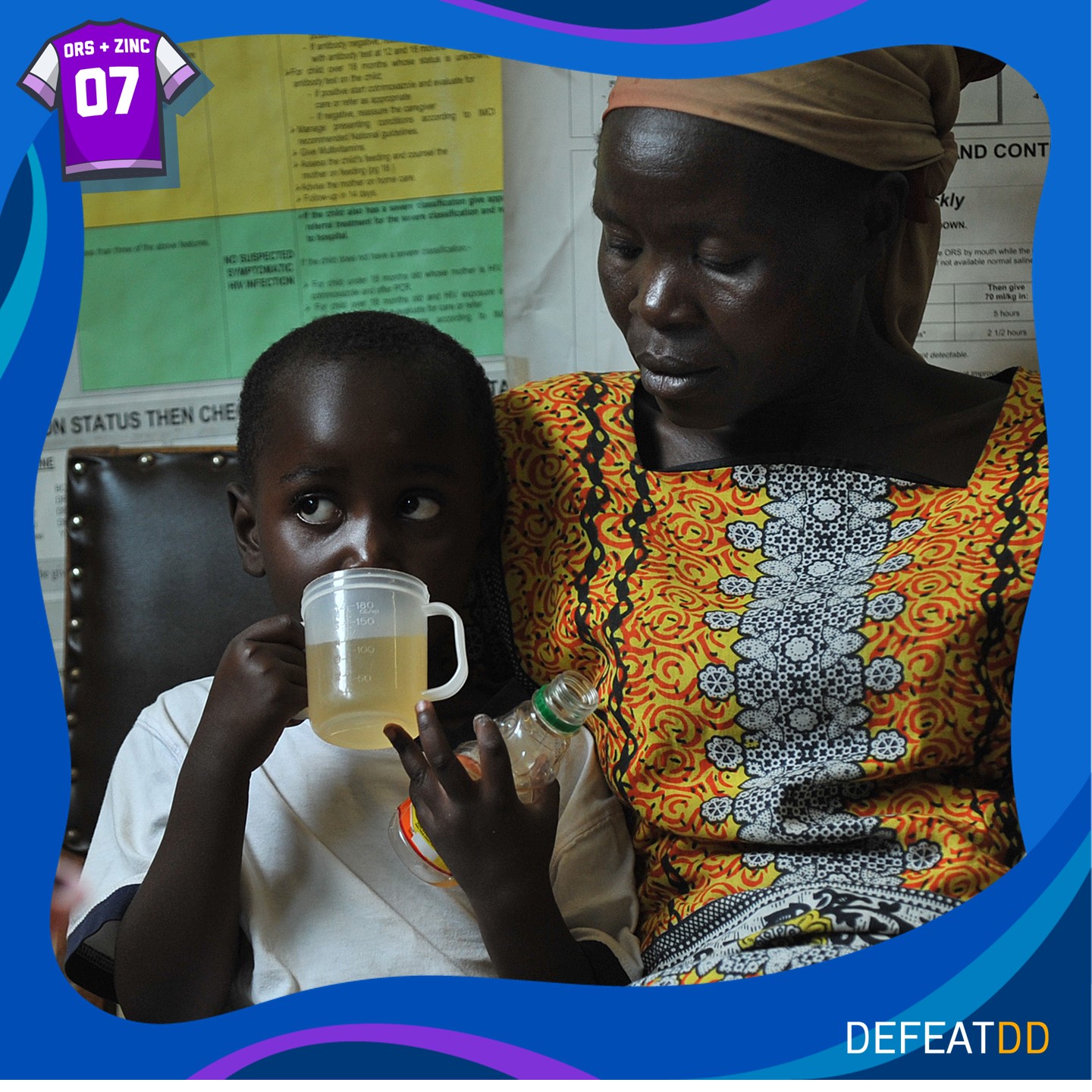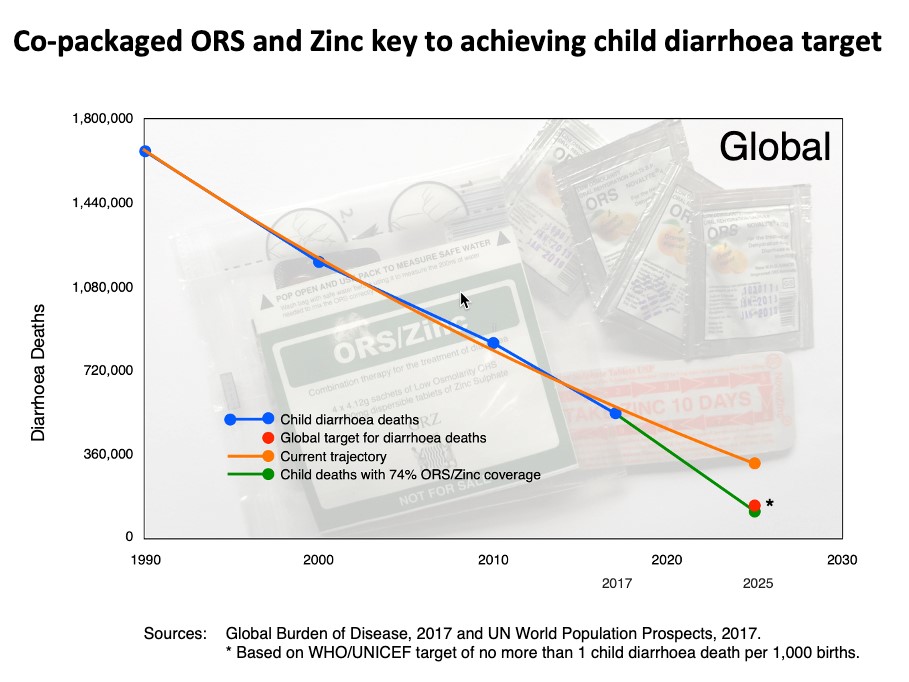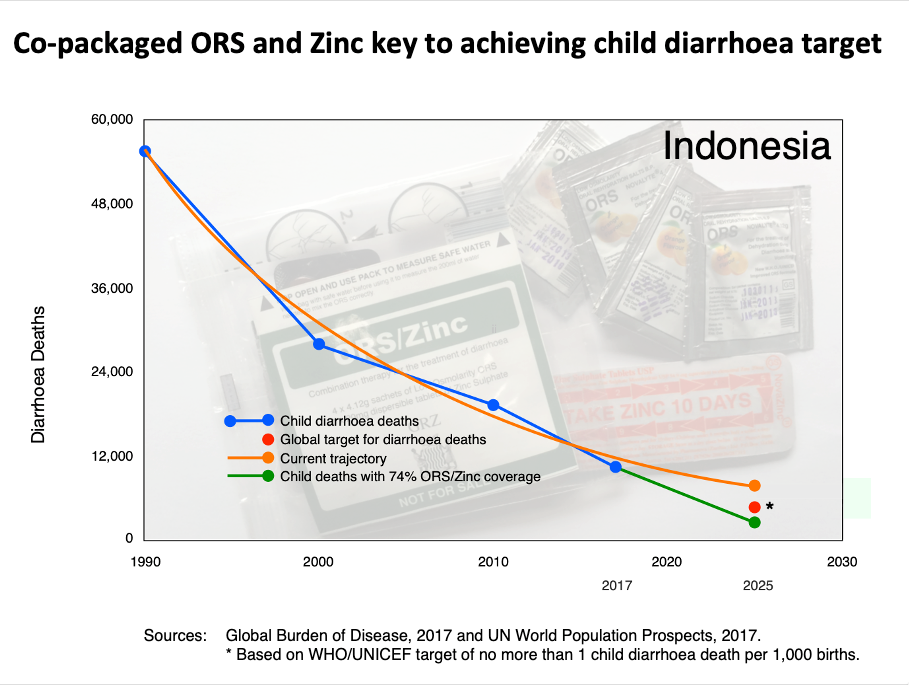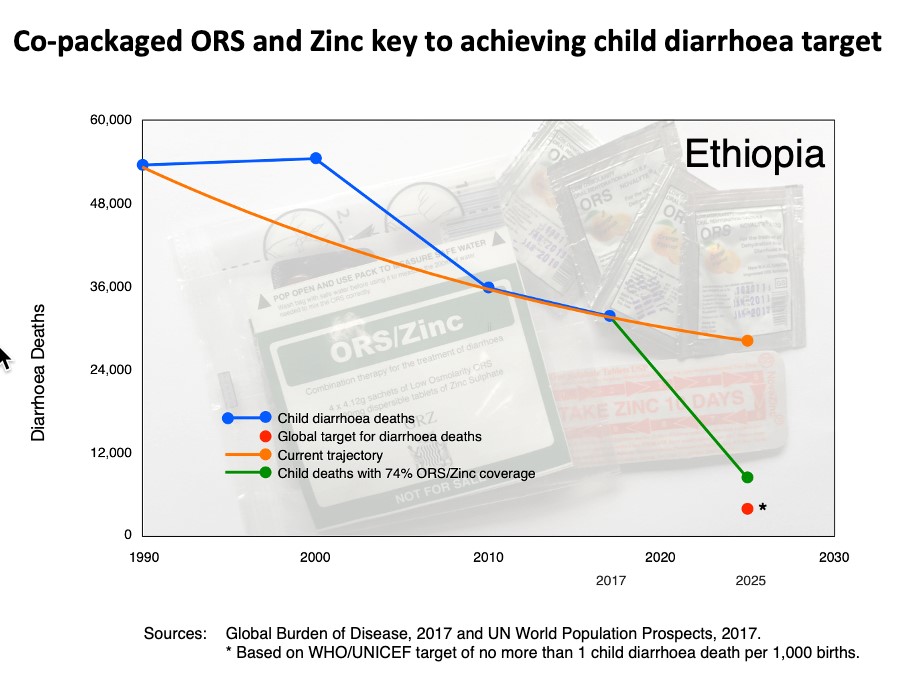
Why is co-packaged ORS and zinc so important?

A boy in a clinic in Kenya sips oral rehydration solution to recover from dehydrating diarrhea. Photo: PATH/Tony Karumba.
Simon Berry, ColaLife and Robert Choy, PATH submitted this blog on behalf of the Diarrhea Innovations Group. This post also appears on the ColaLife website.
While the world’s attention currently is focused on the immediate needs of the COVID-19 response, existing diseases that result in high mortality and morbidity—such as childhood diarrhoea—have not disappeared. On the contrary: the threat has intensified.
New modeling published in The Lancet reveals how supply disruptions, among the pandemic’s other indirect effects, stands to kill hundreds of thousands of additional children on top of existing preventable deaths from pneumonia and diarrhoea. According to the models, interrupted access to antibiotics for neonatal sepsis and pneumonia and to oral rehydration solution (ORS) for diarrhoea throughout the pandemic would account for almost half of these additional child deaths.
Beyond the pandemic, the next five years present a vital opportunity for all low- and middle-income countries (LMICs) to make rapid progress towards reducing child diarrhoea deaths, helping to close the gap to achieve the 2030 Sustainable Development Goal (SDG) for child survival. ORS and zinc are indispensable tools to help us reach those targets.
Recommended by the World Health Organization
 The Zambian Government uses a locally produced ORS and Zinc co-pack for free distribution at government health facilities.
The Zambian Government uses a locally produced ORS and Zinc co-pack for free distribution at government health facilities.
ORS and zinc have been the WHO-recommended treatment for diarrhea since 2004. Despite this, less than 10 percent of child diarrhoea cases are treated with both ORS and zinc, contributing to the death of half a million children per year.
To facilitate greater access and uptake of both medicines, WHO added co-packaged ORS and zinc to its Essential Medicines Lists for adults and children in July 2019.
National findings reinforce global guidance
Evidence from Zambia shows that co-packaging ORS and Zinc dramatically increases the number of diarrhoea cases treated with both.

A necessary tool to reach global targets
Widespread uptake of the new global guidance to co-package ORS and zinc is key to increasing coverage to the levels required to reduce child diarrhoea deaths to meet SDG targets in all LMICs.
The world must drive down child diarrhoea deaths from the current level of half a million children per year (one child dying every minute) to 140,000 per year by 2025 to help achieve the global target. This target, outlined in the Integrated Global Action Plan for Pneumonia and Diarrhoea (GAPPD), requires all countries to reduce child diarrhoea deaths to fewer than 1 per 1,000 live births.
At the current rate of progress, the world will not achieve this target due to the poor performance predicted in most LMICs.
But this target could be achieved at global level if at least 74 percent of children with diarrhoea were treated with ORS AND zinc. At that coverage level, child diarrhoea deaths would drop to 112,000 in 2025.

In some countries struggling with high numbers of child diarrhoea deaths—such as India and Indonesia– co-packaged ORS and zinc alone could achieve the GAPPD target.

Even in countries where this action alone would be insufficient, co-packaged ORS and zinc can close a large proportion of the gap between the predicted mortality rate and the target. Countries such as Nigeria, Ethiopia, Chad and the Democratic Republic of Congo are in this category.

Co-packaged ORS and zinc should be an essential component of GAPPD achievement in all high-burden countries, as it offers a cost-effective strategy to reduce child diarrhoea deaths in the next five years.
All LMICs and their development partners must prioritise procuring, distributing and promoting co-packaged ORS and zinc because it is a key component of an integrated strategy to reduce child diarrhoea deaths in the short-term, and accelerate achievement of the global target of less than one child diarrhoea death for every 1,000 babies born.


